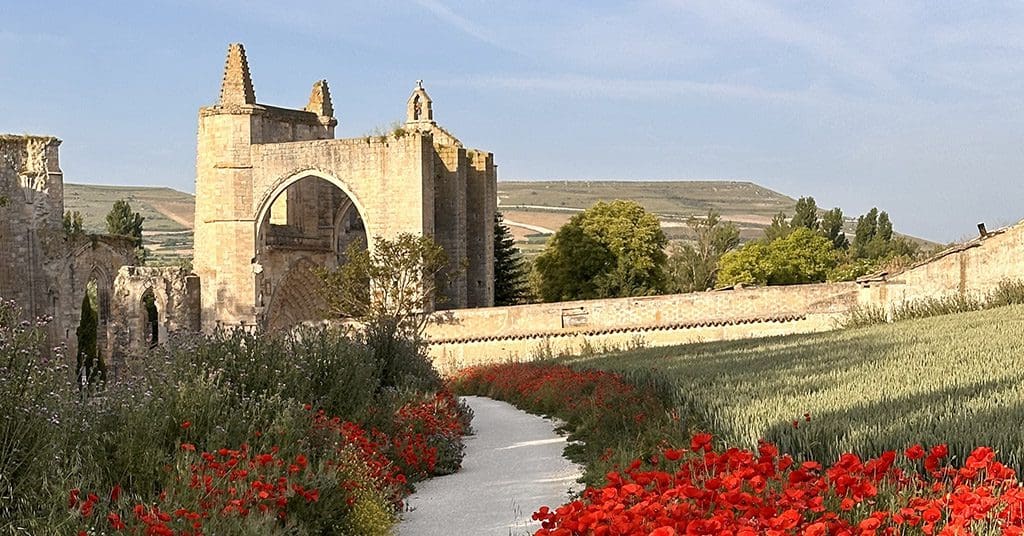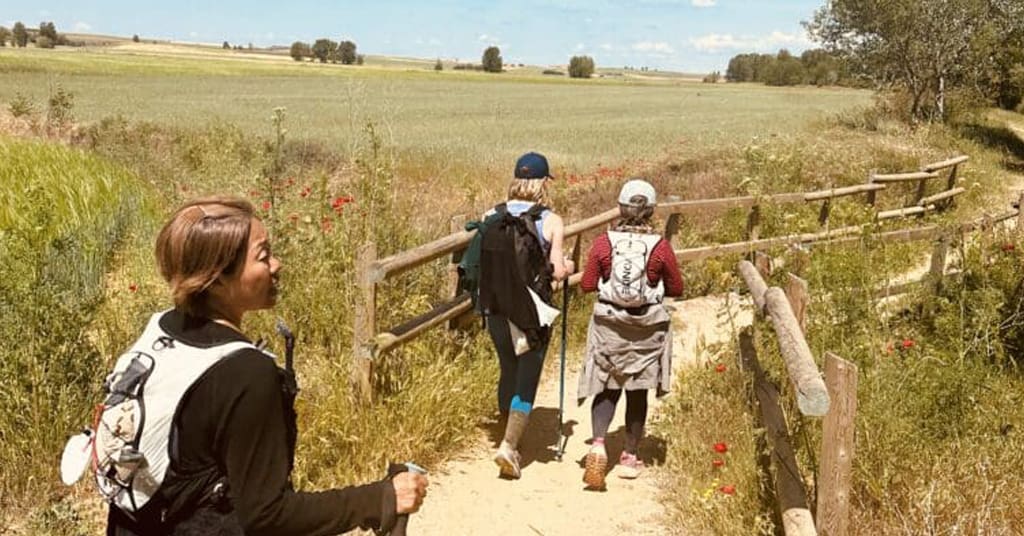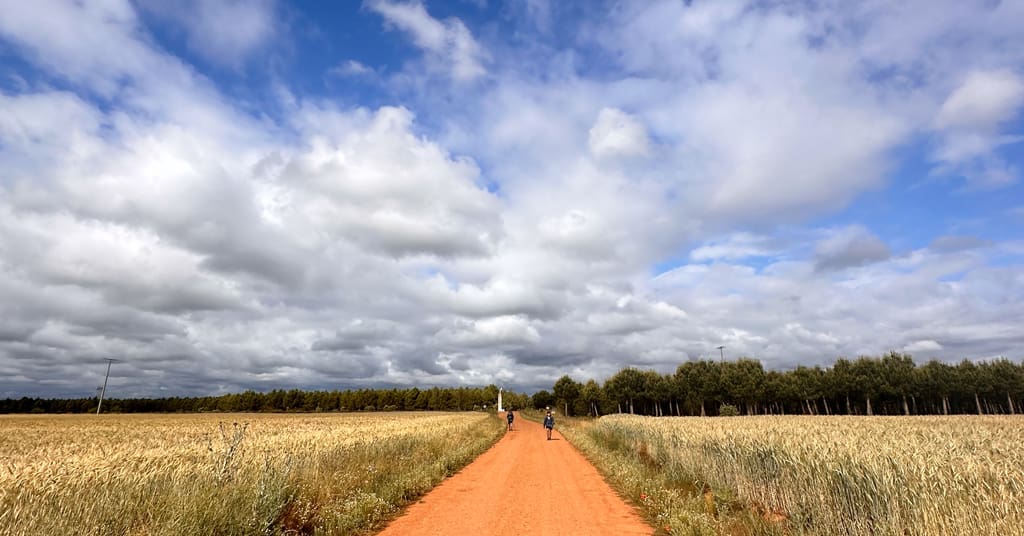Section 5
Burgos to Carrión de los Condes
This next stretch takes you across the first half of the Meseta, the hot and dry high plateau at the centre of the country, and for me, it’s the finest section of the entire Camino Francés. I’ve never understood why the Meseta is so maligned. People talk about skipping it by bus—they say it’s too flat, too long, too boring. But for me, it’s magical. Big skies. Whitewashed villages. Wheat fields moving in the wind like the ocean stirring. It’s incredible.
People often say the first third of the Camino is about the body, because it’s physically challenging as you adjust to walking long days. And they say the last third is about the soul, as you approach Santiago. But the Meseta, the Meseta is about the mind. There’s a stillness to it, a space where your thoughts have room to stretch out and settle. So let’s get started.

Burgos
473 KM to Santiago
The walk out of Burgos is much more charming than the walk in. That wouldn’t be hard. From the cathedral, you head back to the river and follow its bank until you reach the edge of town. The path intersects with a few roads, which can be a bit busy and treacherous, but it mostly avoids them. If you find yourself on the road, just ease your way back to the trail and keep going.
Tardajos
473.2 KM to Santiago
After about 10 kilometers, you’ll reach the village of Tardajos. The Camino veers away from the main road here, and from this point on, you won’t return to anything resembling a busy road for days.
Rabé de las Calzadas
771 KM to Santiago
A few more quiet kilometres and you’ll come to Rabé de las Calzadas. The Camino is now slipping fully into the heart of the Meseta. There’s a fabulous albergue here, Albergue Liberanos Domine. A quintessential family-run place with a true homely feel. A real gem. The host is Clementina. If you’re like me and prefer to stay in that Camino headspace, avoiding cities with their traffic and noise, this is the place to be. The food’s great too, just proper home cooking, nothing fancy, but full of heart.
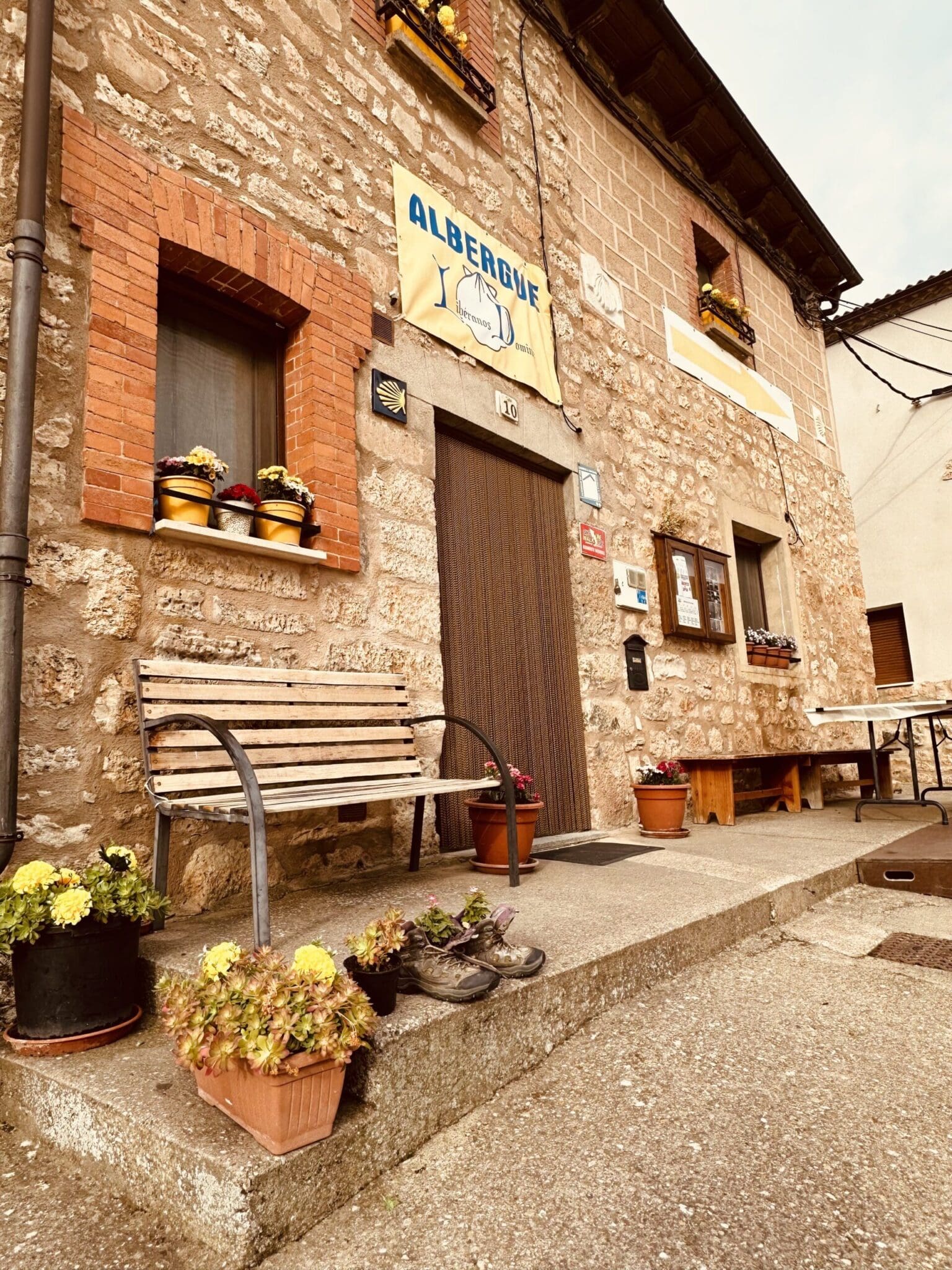
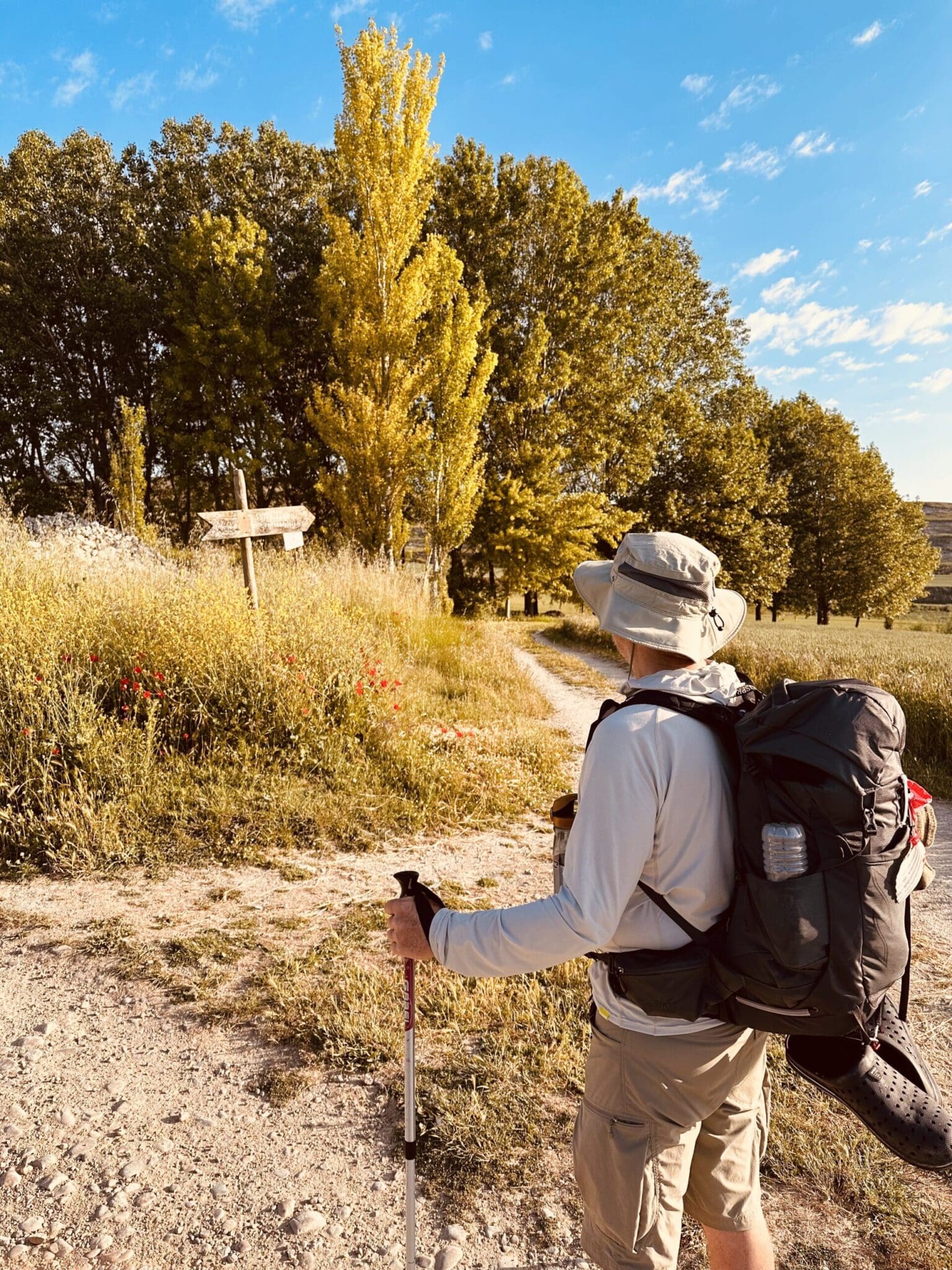
Hornilios del Camino
463.5 KM to Santiago
From Rabé, it’s another ten kilometres to Hornillos del Camino. I think the name means “little oven”, maybe from the old days when it was a place for pilgrims to stop and eat. Although on a hot summer day, it might take on a completely different meaning entirely. The village is tiny, quiet, and lovely. Because it’s 20 kilometres from Burgos, a whole stage for many, it can be hard to find a place to sleep here.
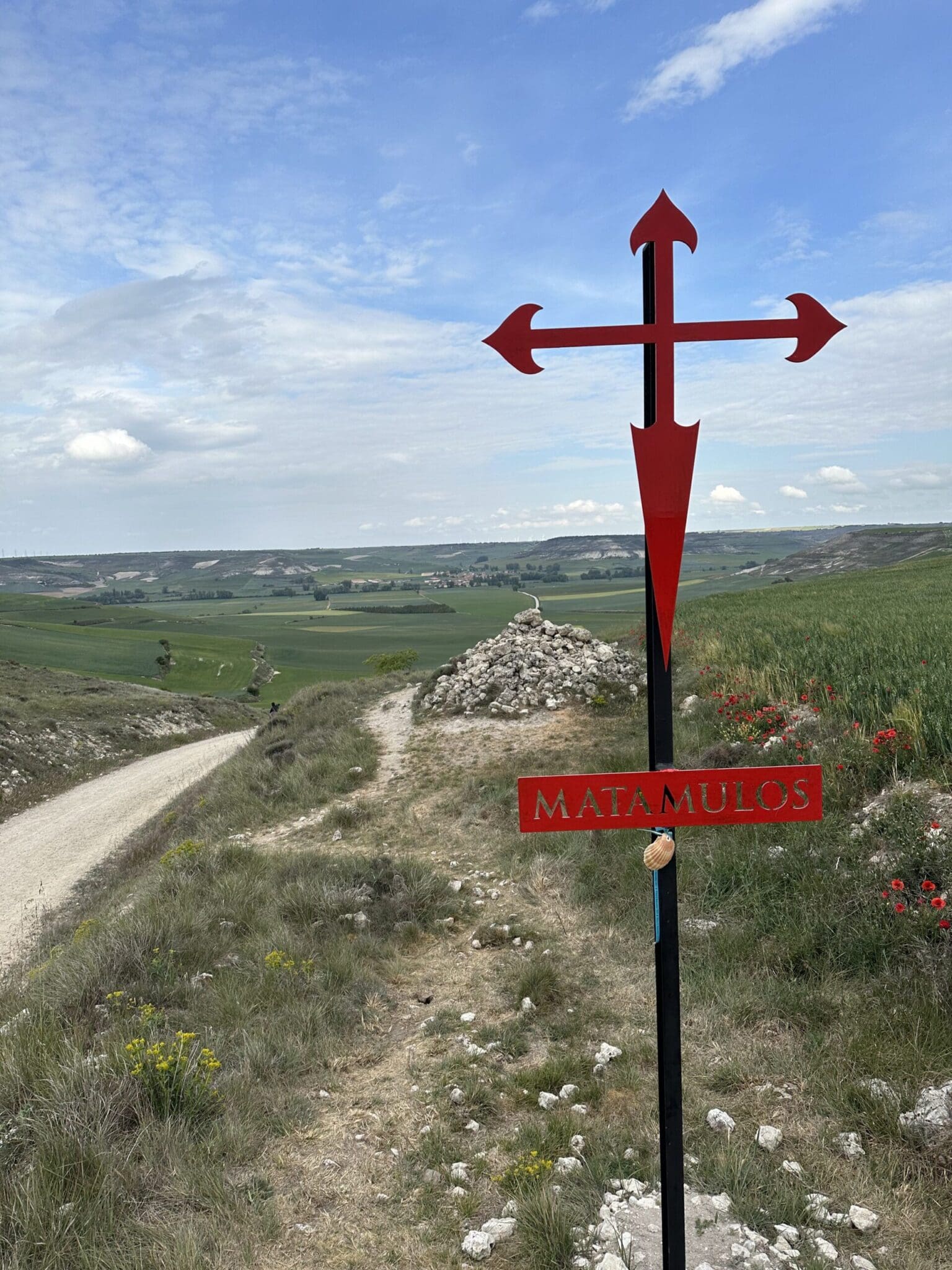

If you’re lucky enough to secure a spot in the municipal albergue, it’s located just off the small square next to the church. It’s an old stone building, super comfortable and really welcoming. When I stayed there, they served a fantastic communal meal made with local ingredients. Hornillos Meeting Point is another excellent option, and the paella dinner there is terrific.
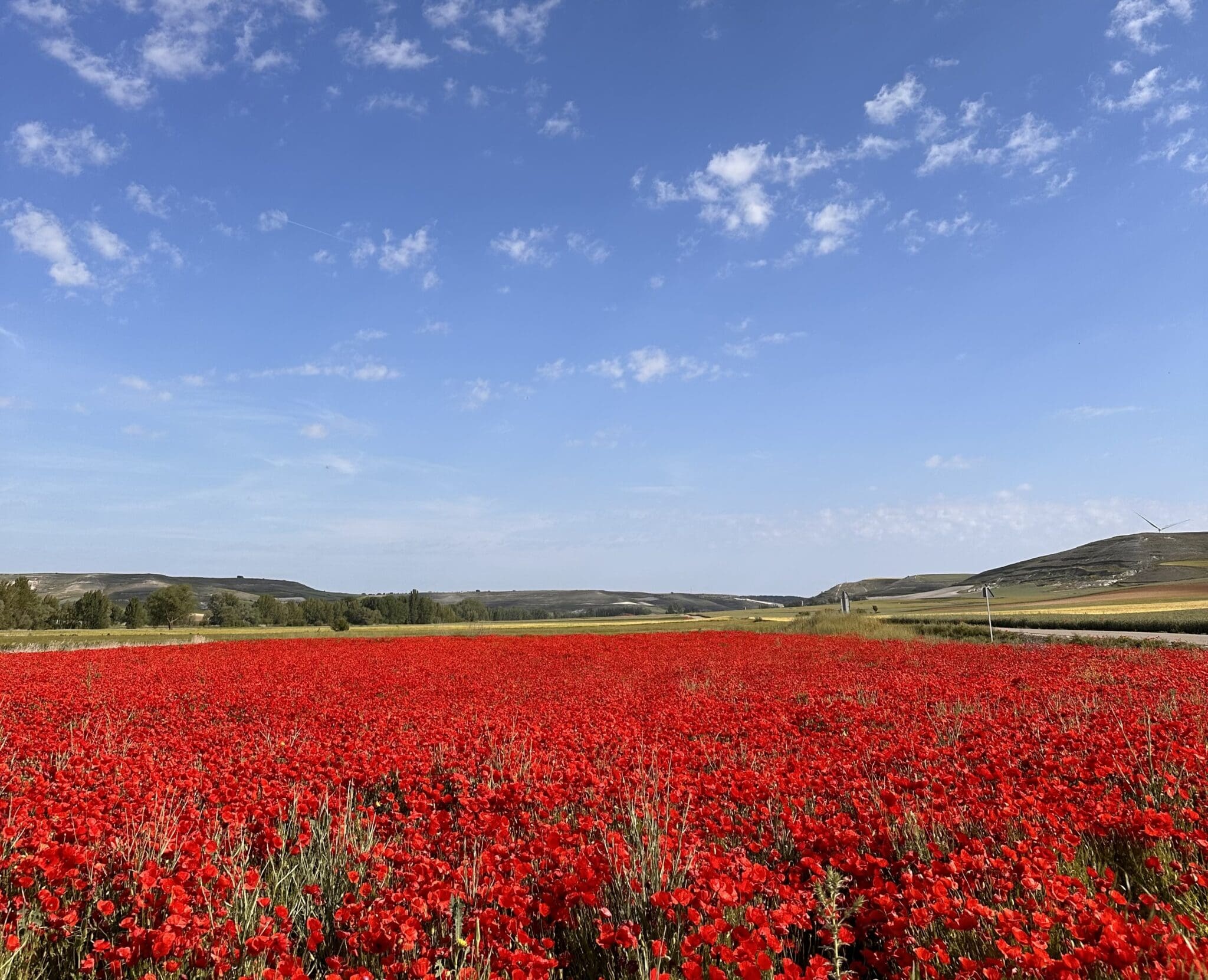
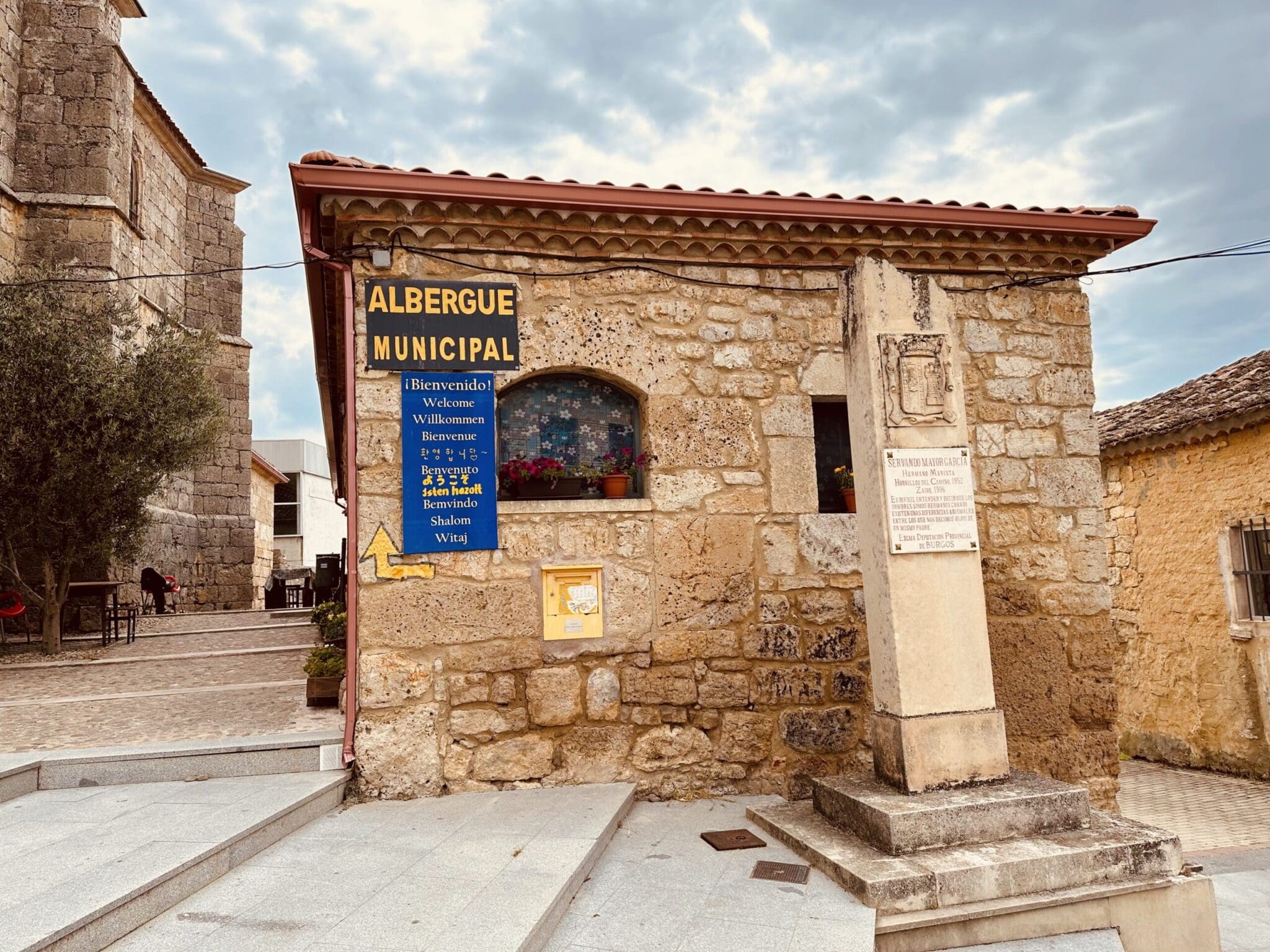
Arroyo San Bol
458.3 KM to Santiago
Leaving Hornillos, the Camino continues on a simple, beautiful path. You’re now deep in the Meseta. After around five kilometres, keep an eye out to the left. About 200 meters off the path is Arroyo San Bol, just one building in the middle of nowhere. It’s used as an albergue and has around ten beds. They serve a fantastic communal meal around a big round table.
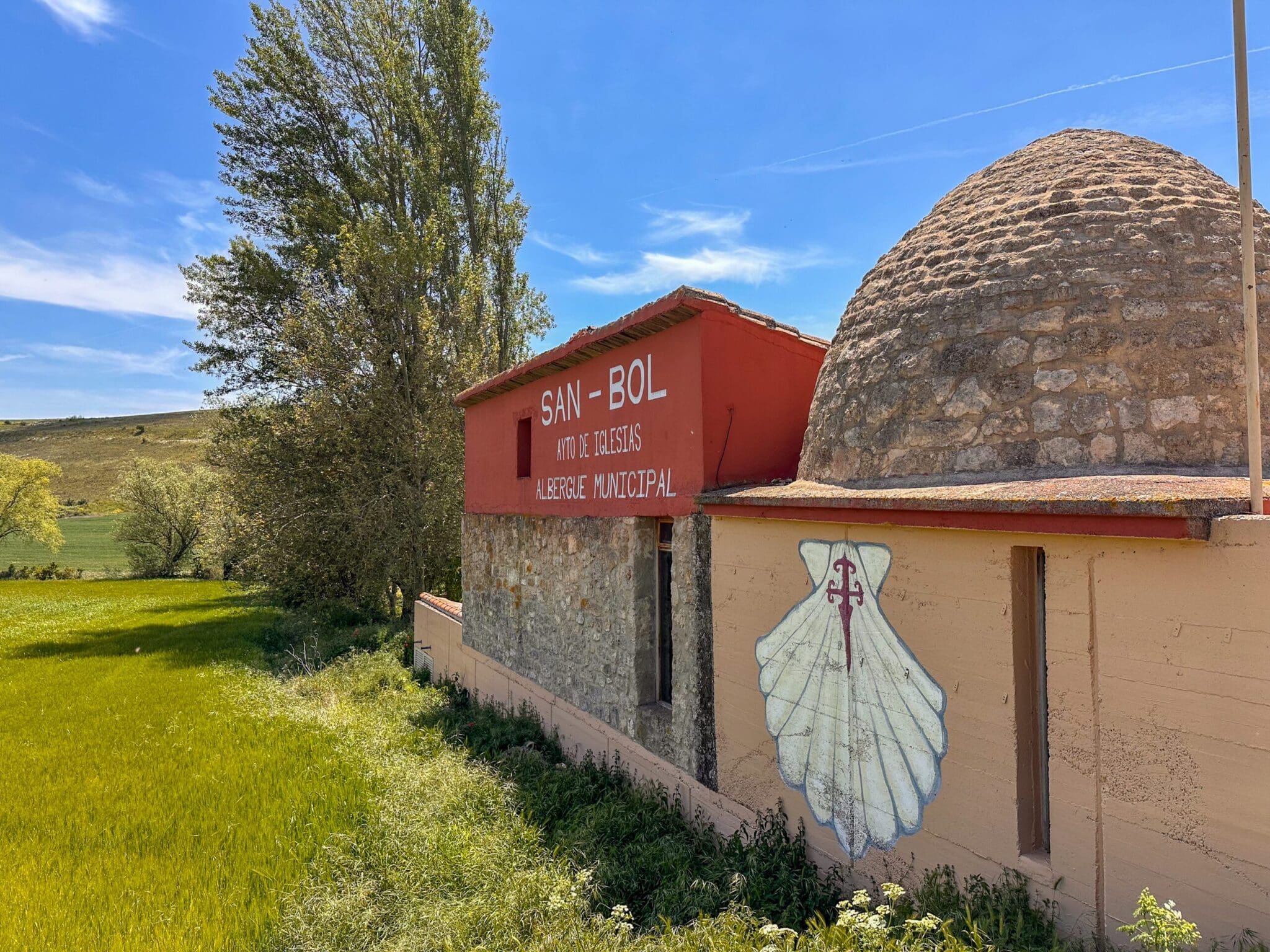

Arroyo San Bol is away from everything and is a perfect place for stargazing. The Milky Way reveals itself in full glory here, with no light pollution at all. If you plan to stay, check the moon cycle; you want a night with a new moon to catch the whole cosmic show.
There’s also a place to soak your feet. I think the water comes from a deep spring, because even on a scorching day, it’s icy cold. It’s the kind of place that invites you to stop, even if you plan to walk on to Hontanas. Take the 200-meter detour, stay a while, and enjoy the splendid isolation.
Hontanas
453 KM to Santiago
After Arroyo San Bol, it’s another five kilometres to Hontanas. Hontanas is another one of those classic pilgrim villages. Most villages along the Camino are built on hilltops; you see them from a distance, a goal on the horizon, but not this one. Hontanas hides in a shallow ravine, tucked into the land itself. It seems to appear from nowhere, a sudden gift. You’re walking through empty space, and then, there it is.

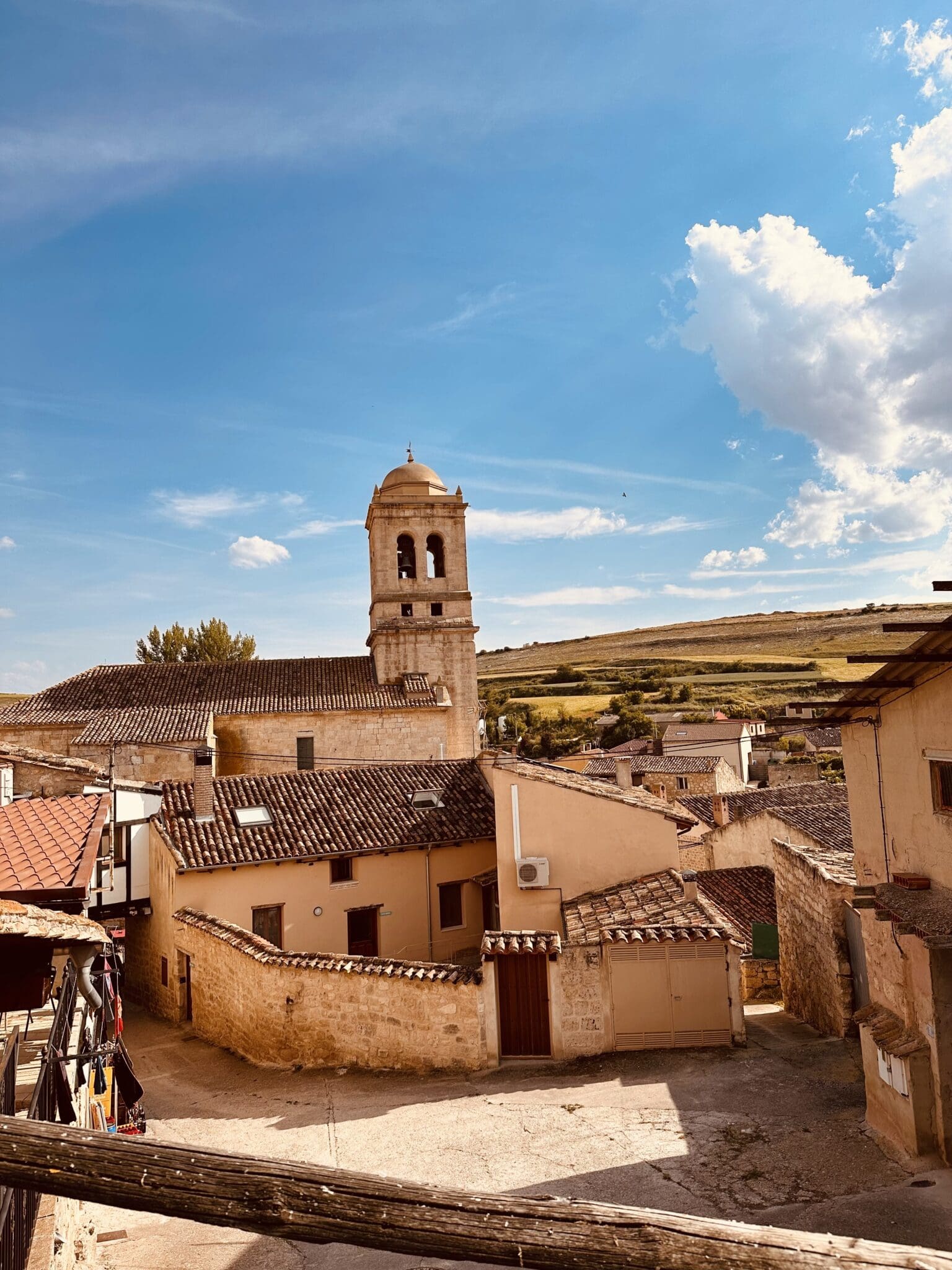
There’s something magical about entering Hontanas. It’s one of my favourite stops on the Camino. Right in the middle of the main street, there’s a small bar that sells the coldest beer on the whole Camino. Walk in, grab a frosty mug straight from the freezer, and they’ll pull you a pint. For a moment, I feel like I’m back in Ireland. Then I sit outside in the sun and people watch as your pilgrim friends straggle into town, dusty and smiling.

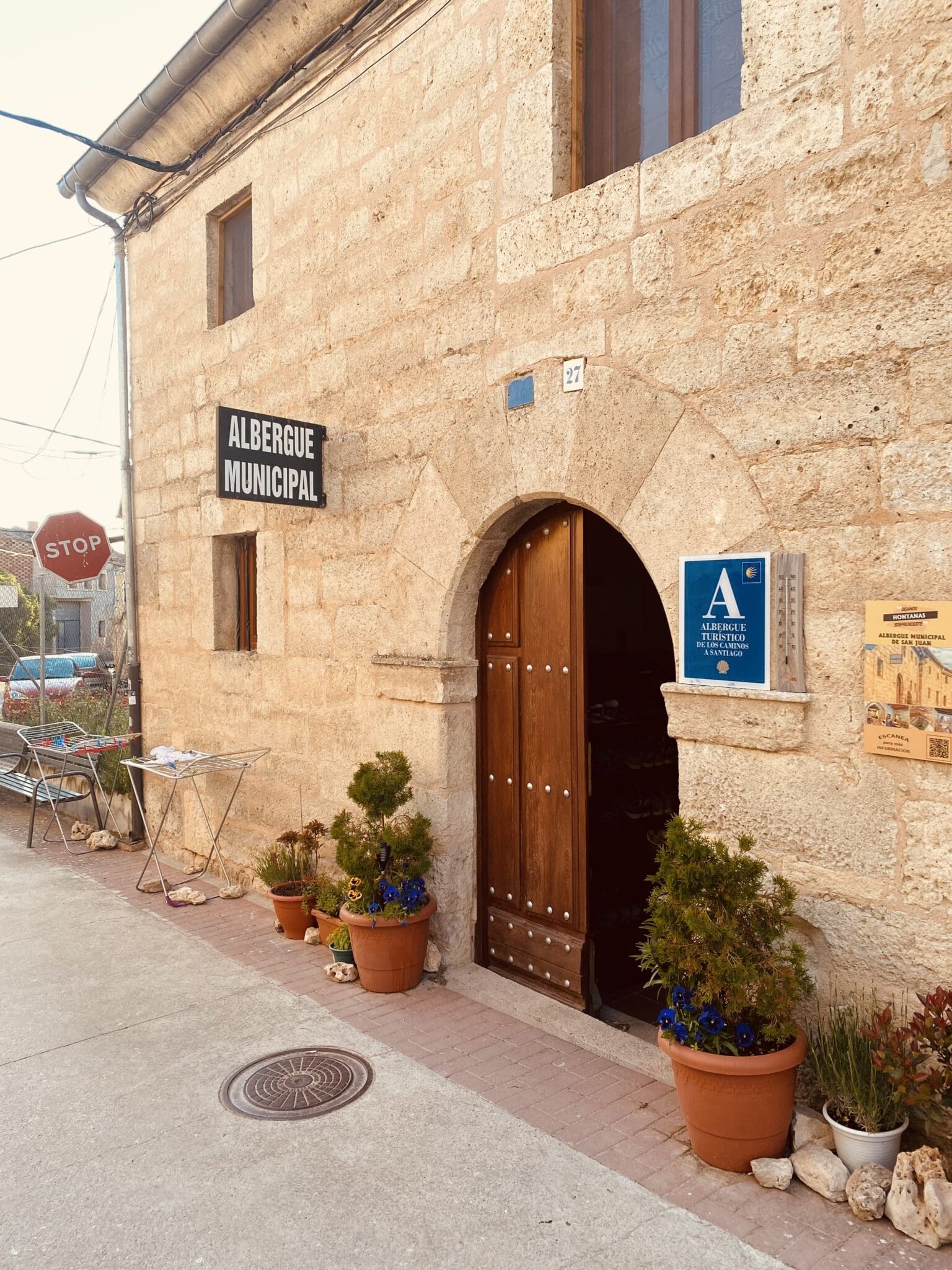
The bar doubles as an albergue, so if you have a few beers in the midday sun, you can sneak off for a siesta before the communal meal next door. Hontanas is the kind of place I could easily spend a few idle days, a village lost in time. There are other places to stay as well, including a solid municipal albergue and a couple of more luxurious options, but El Puntido is my favourite.
San Antón – The Ruins
447.2 KM to Santiago
Leaving Hontanas, the Camino continues for about five kilometres until you reach the ruins of San Antón. This old monastery belonged to the Order of Saint Anthony, which cared for sick pilgrims, especially those with ergotism, a serious illness caused by consuming contaminated grain, typically rye. It was common in the Middle Ages and known back then as “St. Anthony’s fire.” The last arch of the church still stretches right over the Camino. You walk under it like a medieval pilgrim.

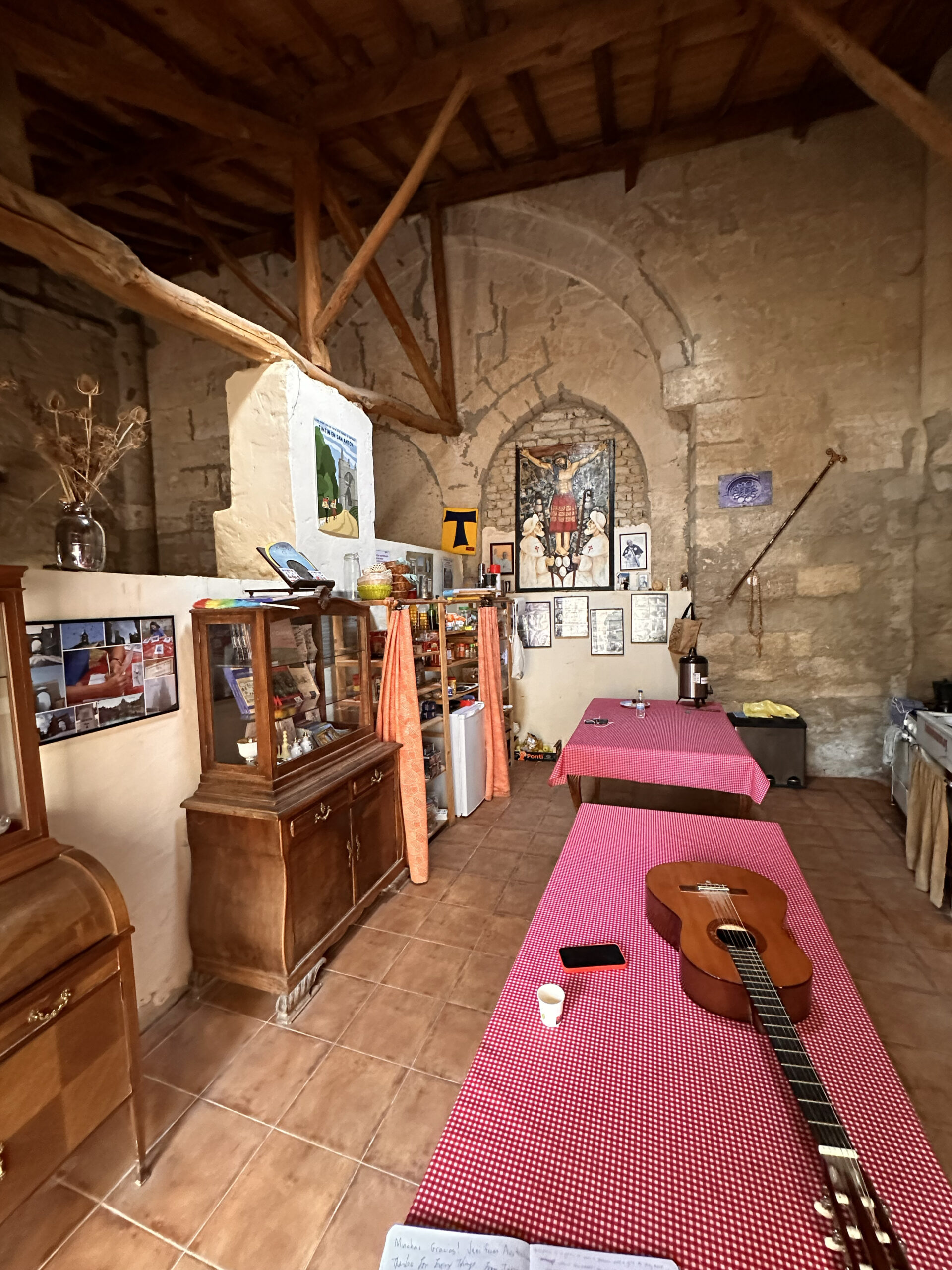
The albergue at San Antón is a donativo, and it’s a true Camino treasure. No electricity, no Wi-Fi—just a lot of love and simplicity. There are twelve beds. They serve a communal meal. Volunteers run it. There’s no way to book. No email, no phone. You just show up. And if the stars align, you’ll get a bed. It could be one of your most memorable nights on the Camino.
Castrojeriz
443.5 KM to Santiago
From San Antón, the Camino follows a quiet road to the hill town of Castrojeriz. It’s a strangely shaped village, just one long street that hugs the curve of the hill. Another fabulous place to stop. This stretch of the Camino is just one incredible village after another. It’s hard to pick where to stay.
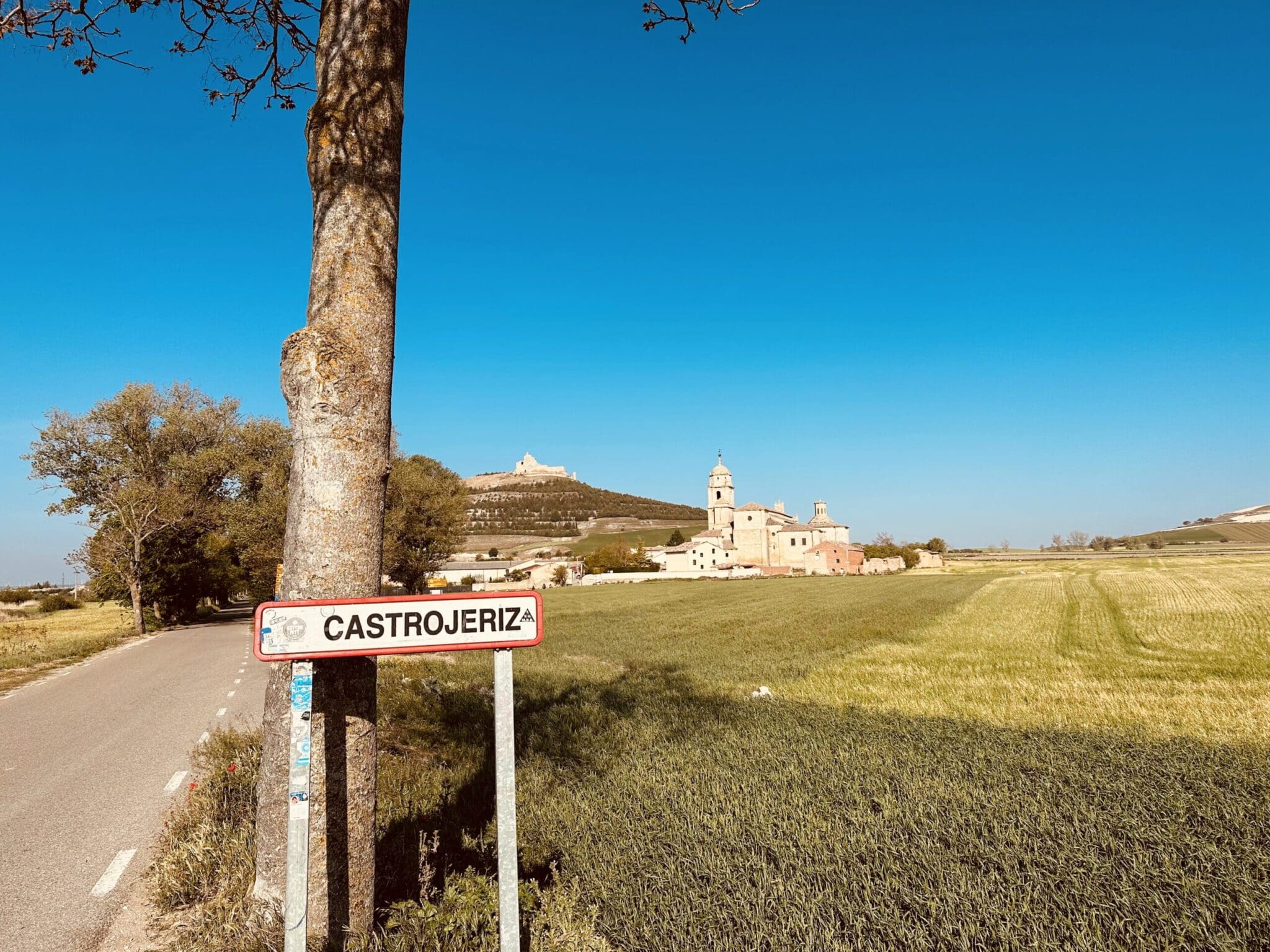

In town, there are three churches to explore and a winding path up the hill that rewards you with sweeping panoramic views. Don’t miss the Oriente in the Hospital del Alma, part art gallery, part meditation space. The whole building hums with stillness and creativity. Castrojeriz also has a few traditional old shops that feel like stepping back in time, wooden counters, hand-painted signs, and a different rhythm of life.
On your way out of town, stop at Bar Lagar, named after the old grape press preserved right in the middle of the room. It’s a lovely place for a morning coffee or evening wine.

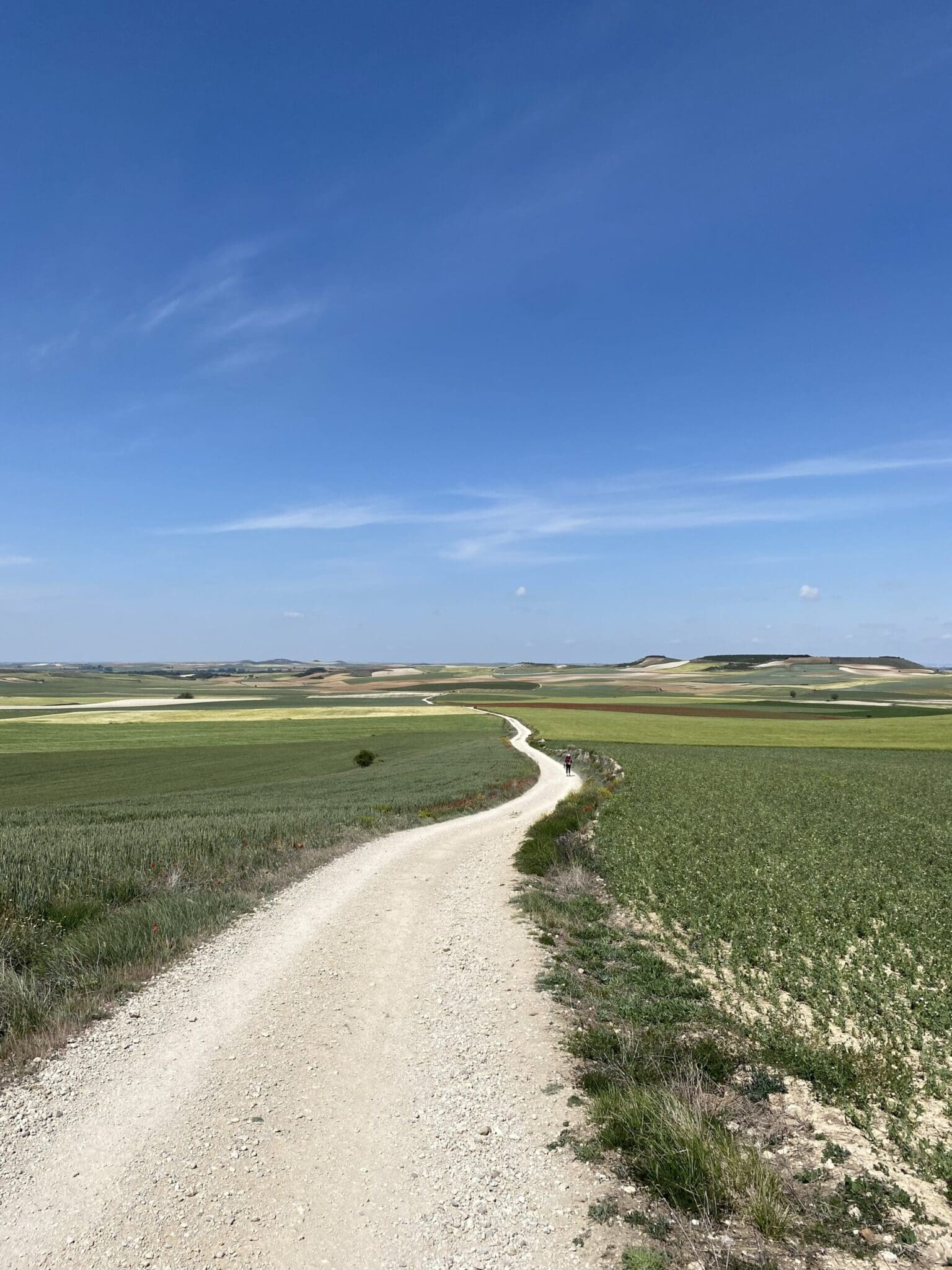
There are some great places to sleep here. Albergue de Peregrinos San Esteban is situated within a restored convent, featuring peaceful cloisters and simple beds. Albergue Ultreia is cosy and welcoming, with a lovely garden and friendly hosts. Albergue Rosalía is a little more modern, but it still maintains the Camino spirit of being clean, quiet, and well cared for.
Ermita de San Nicolás
434.5 KM to Santiago
Leaving Castrojeriz, the Camino throws a surprise, Alto de Mostelares. It’s a short, steep climb right out of town. Tough, but the view from the top is one of the best on the Camino. Rolling fields as far as the eye can see. The descent on the other side is sharp and rocky, so watch your step.

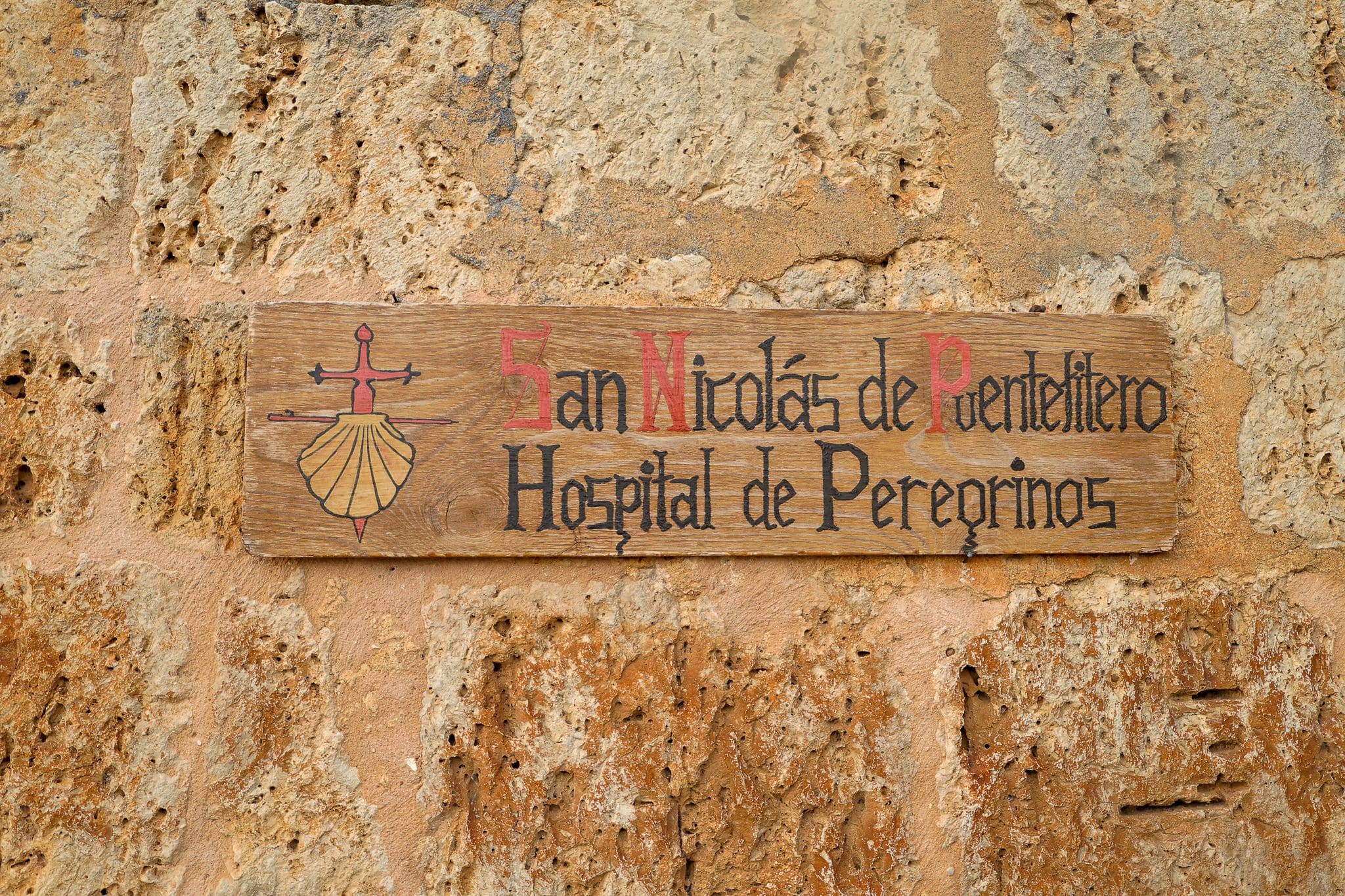
The trail then flattens out, and you’re back in vast, open country. After about 6 km, you’ll reach Ermita de San Nicolás, a small, restored 13th-century church right before the old stone bridge over the Río Pisuerga.


The Ermita has been turned into a donativo albergue, run by Italian volunteers, and it’s honestly one of the most special stops on the Camino. There’s no electricity, no Wi-Fi, just candlelight at night, simple bunks, and a home-cooked meal shared together around a long wooden table. In the evening, they also hold a small foot-washing ceremony, an old pilgrim ritual that’s incredibly moving to experience. It’s the kind of place that strips everything back to the basics and reminds you what the Camino is really about: community, simplicity, and a bit of soul.
If there’s space, it’s absolutely worth staying. A peaceful end to the day, with the river flowing nearby and stars overhead. One of those rare Camino nights you don’t forget.
Itero de la Vega
432.5 KM to Santiago
Leaving the Ermita de San Nicolás, you cross the Puente Fitero, a long, elegant stone bridge built by monks in the 11th century. It spans the Río Pisuerga and marks your entrance into the province of Palencia.
Itero de la Vega is a tiny, peaceful village with just one bar, a small church, and not much else. It’s the kind of place that forces you to slow down, which is no bad thing. The main albergue, Hogar del Peregrino, feels more like someone’s home than a hostel. They serve up meals, and there’s usually a good bit of chat around the table in the evening.
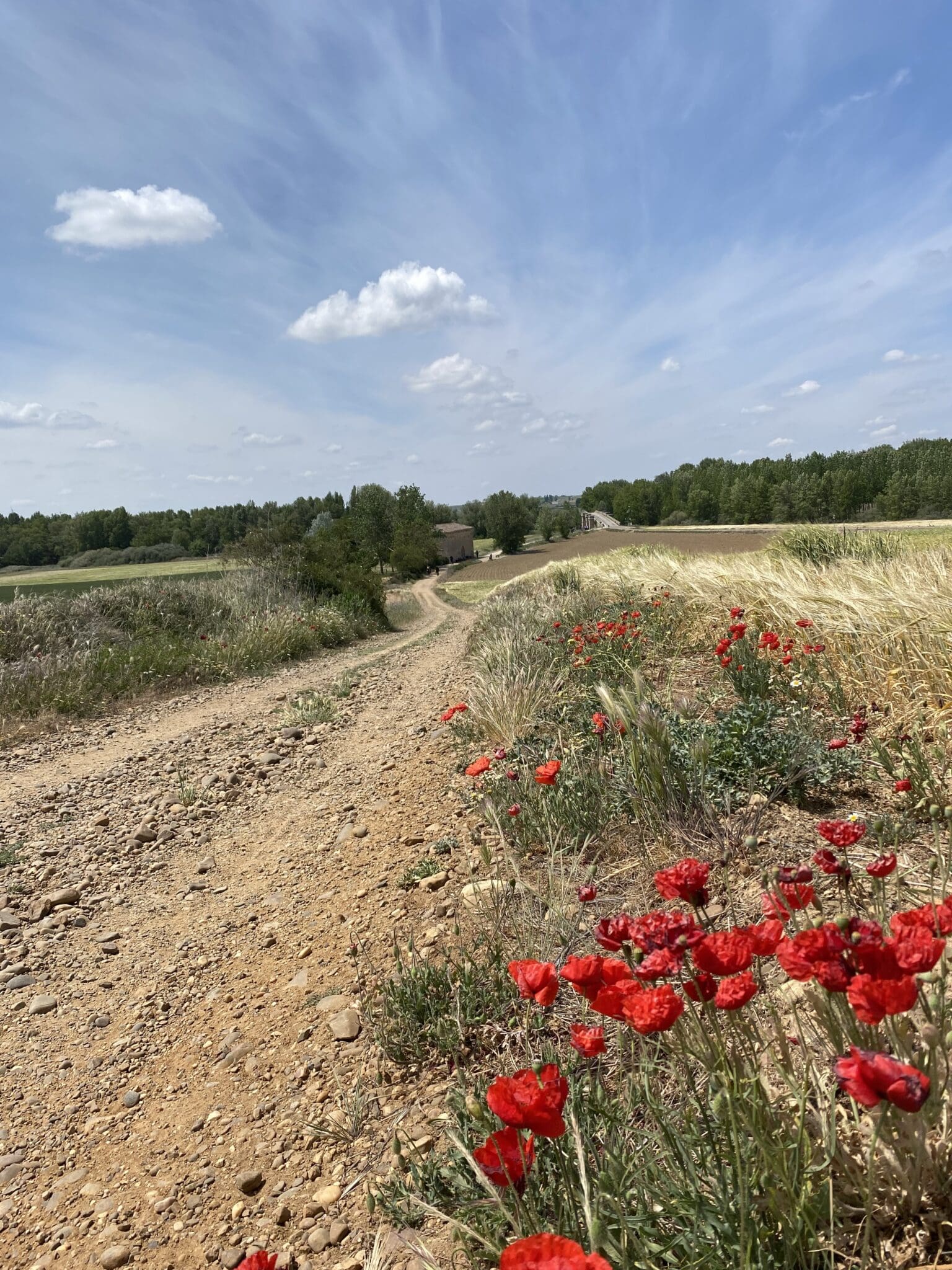

Boadilla del Camino
429.4 KM to Santiago
Pushing on, it’s another 8 km to Boadilla del Camino. The path follows dusty farm tracks through open wheat fields. It’s flat, vast country, classic Meseta walking.


Boadilla is a small, working farm town, not much to look at from a distance, but it’s a lovely stop. Tucked inside is Albergue En El Camino, one of the best albergues on this stretch. It has a large garden with hammocks and a pool, and a relaxed, welcoming vibe. There’s also a great communal dinner and a sense of care that makes it feel more like a retreat than just a place to crash. A perfect place to end the day and recharge.
Frómista
419.0 KM to Santiago
Leaving Boadilla del Camino, the path runs straight and easy, following the old tow path of the Canal de Castilla. It’s one of the most peaceful stretches on the Camino, just you, the water, the trees, and the crunch of your boots on gravel. The canal was built in the 18th century to transport grain, and it’s still full of quiet charm. You’ll likely see herons, ducks, and the occasional fisherman, and if the sun’s up, the trees along the edge offer just enough shade to keep things comfortable.
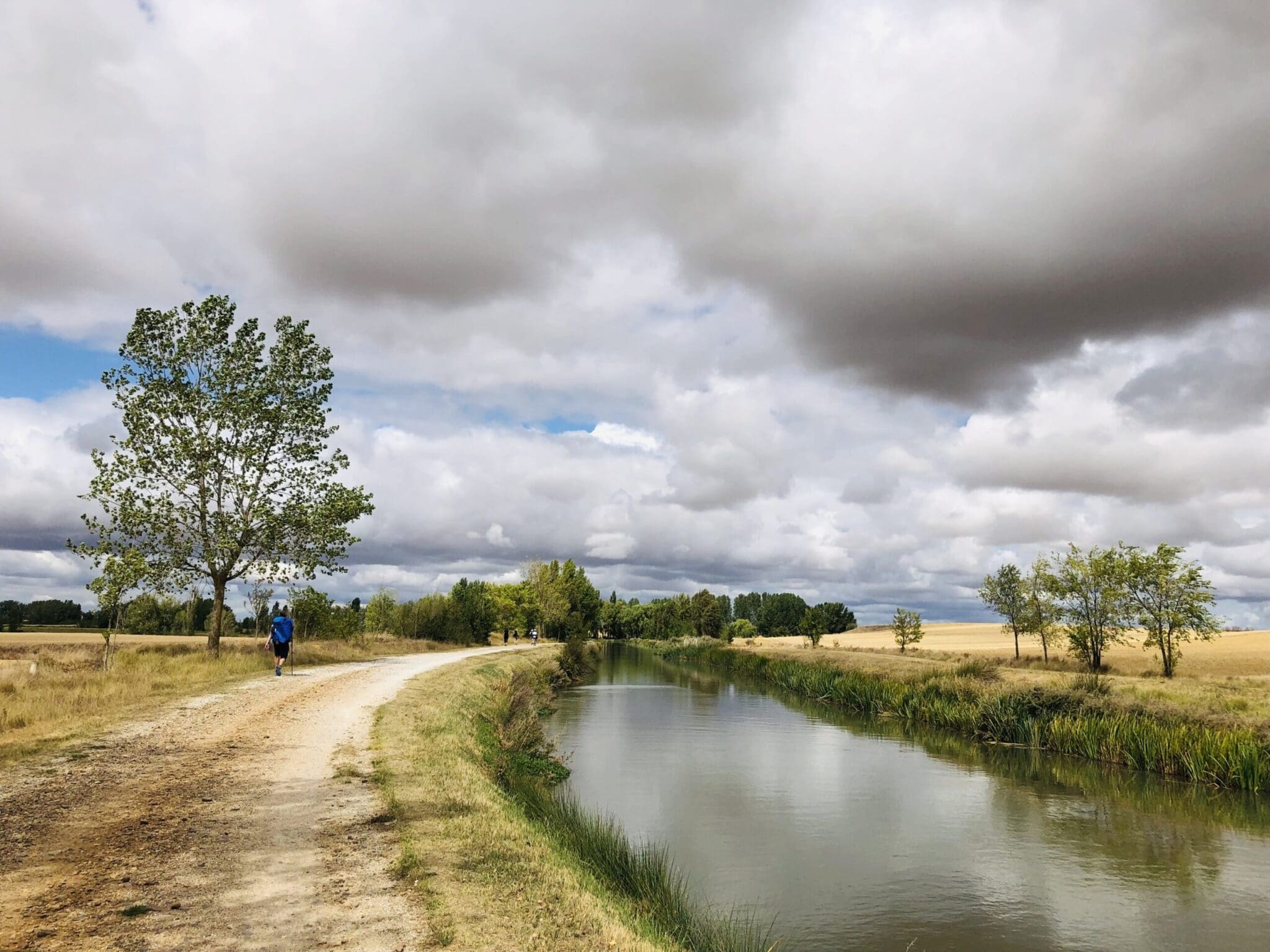

After about 6 km, you come to Frómista. It’s a small town with Roman roots and a significant pilgrim presence. The standout here is the Iglesia de San Martín, built in 1066. It’s one of the finest examples of pure Romanesque architecture in Spain. Perfectly proportioned, clean lines, beautiful stone carvings, and those iconic rounded arches.


Frómista has plenty of places to sleep, eat, and stock up. Some pilgrims carry on, but it’s a good place to end the day, especially if you want time to take in the church, rest a while, and maybe enjoy a quiet evening by the canal.
Villalcázar de Sirga
406 KM to Santiago
Leaving Frómista, most pilgrims take the official Camino route—an arrow-straight path that runs right alongside the road. This stretch is probably the reason some people say the Meseta is boring. Long, straight, hot, and endless.
But you don’t have to take that route.
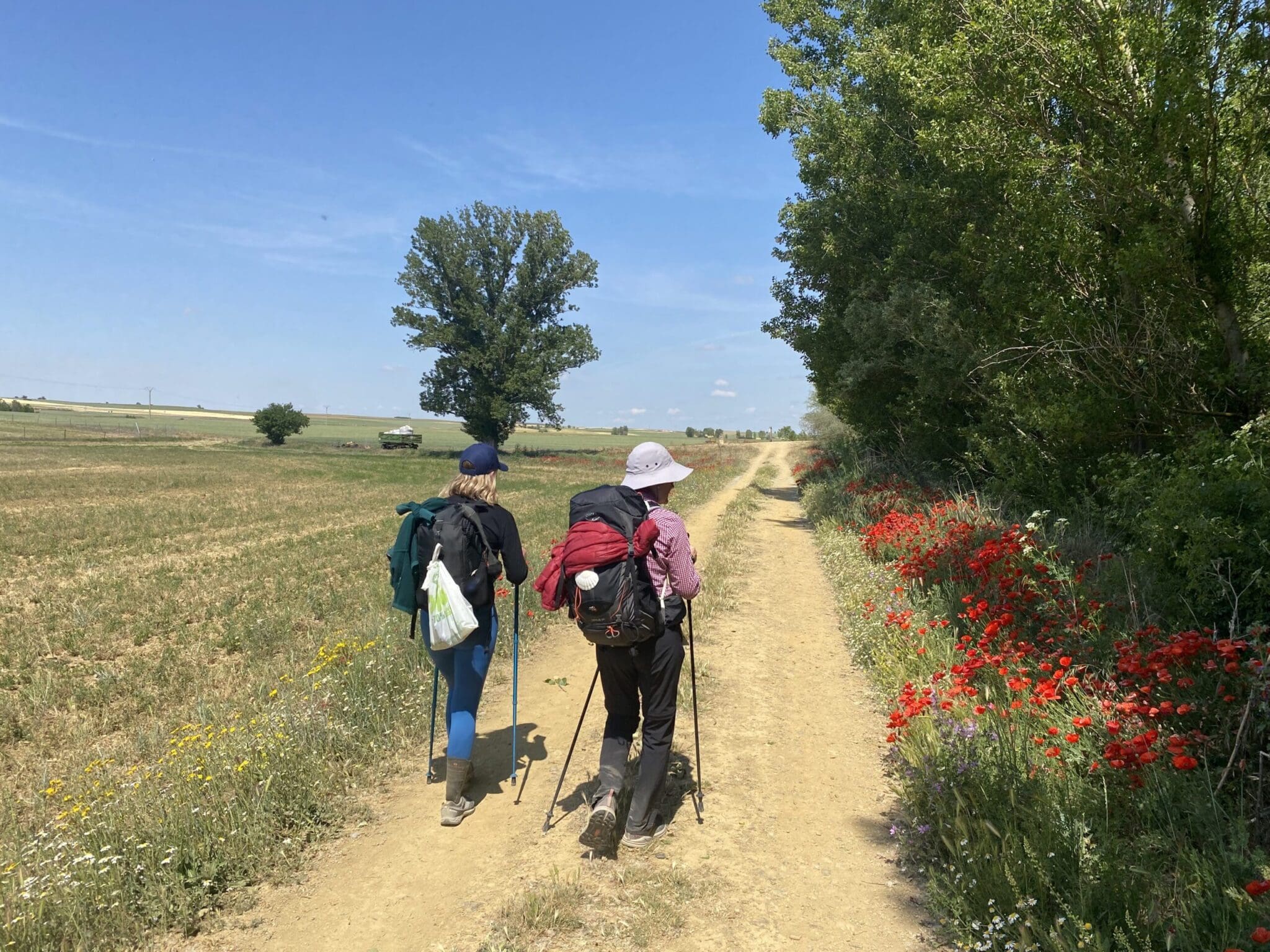
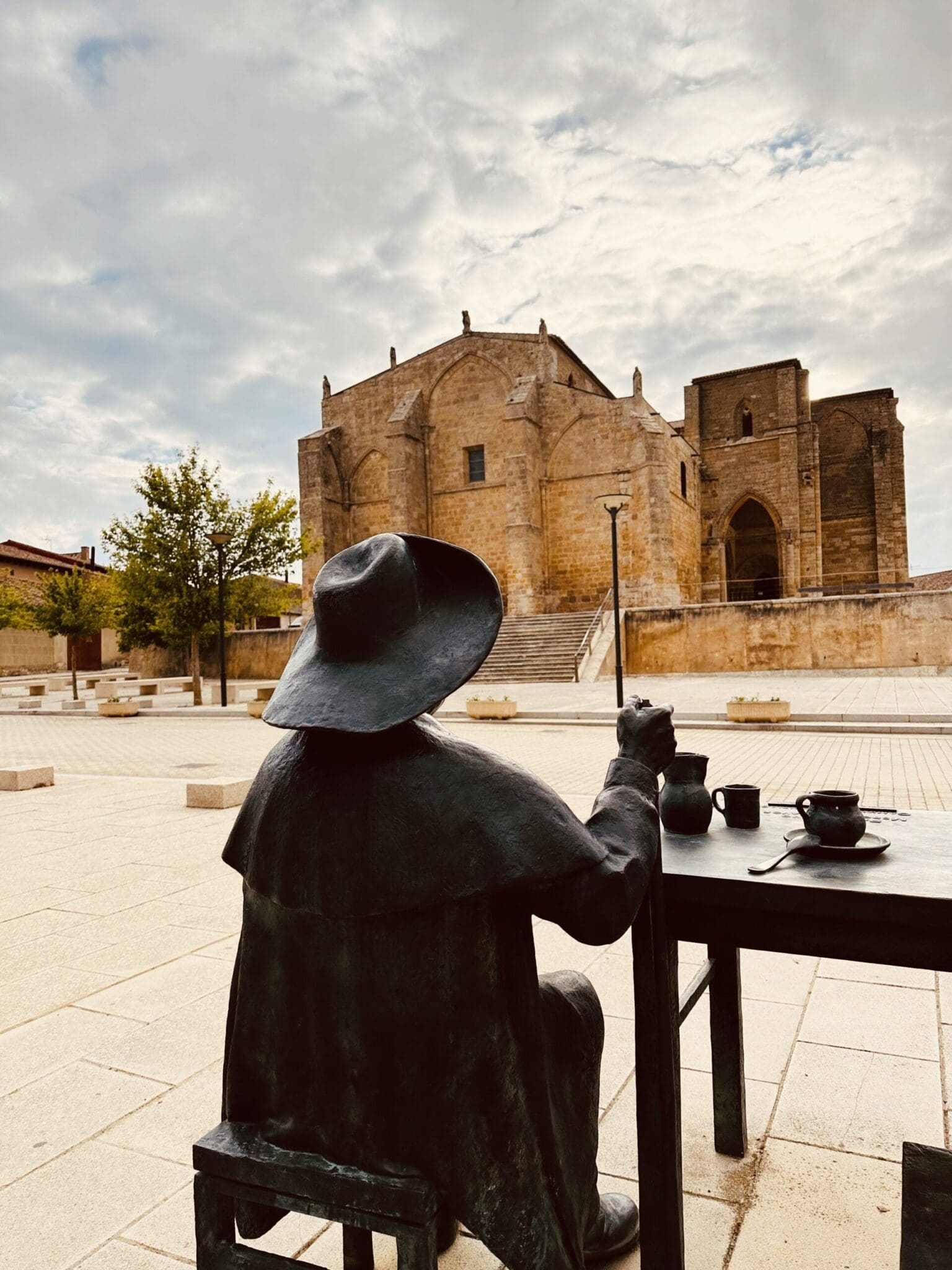
Instead, head for the river path, a quieter, more peaceful option that follows the Río Ucieza. You’ll find the turn-off just past the main road out of Frómista. Look for a small sign pointing left, just before the Camino veers right toward the road. The river path runs more or less parallel but trades tarmac and trucks for trees and birdsong. You’ll walk shaded stretches beside the water, pass through groves and farmland, and occasionally catch a glimpse of the distant road far away, where you’re glad not to be.
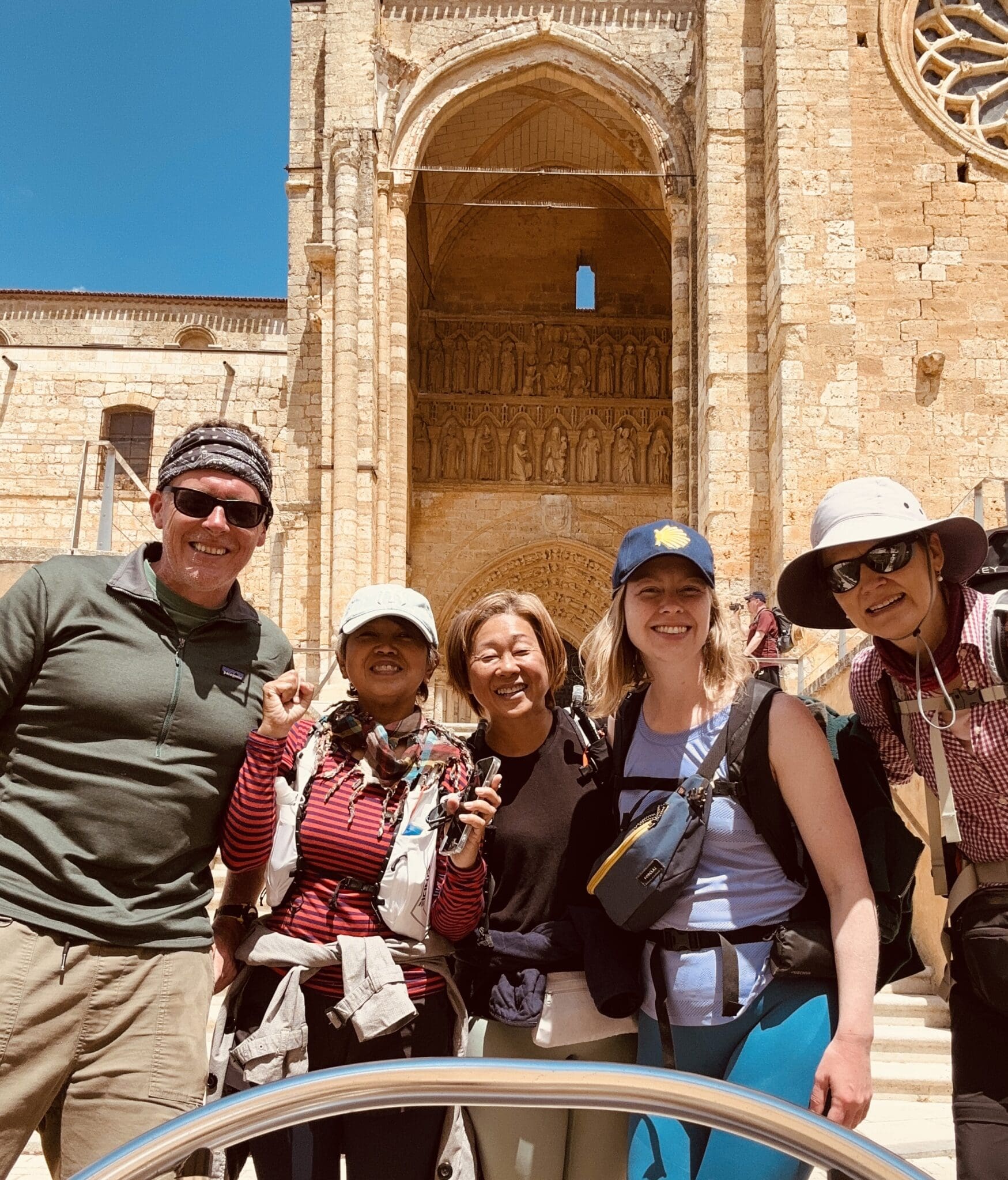

After around 9 km, you reach Villacázar de Sirga, a small but striking village with a big surprise in the centre: the Iglesia de Santa María la Blanca. It’s a massive stone church, more like a fortress. Built by the Knights Templar in the 13th century, it was once a major pilgrimage site in its own right. The carvings around the entrance are incredible, and the atmosphere inside feels ancient and still.
For pilgrims staying the night, there are two good albergues. Albergue de Peregrinos Casa del Peregrino sits just off the main square and has a welcoming, traditional feel, stone walls, a warm dining area, and good food. Albergue Don Camino is a bit more modern, with clean rooms and a relaxed courtyard to rest your feet. Both have everything you need.
Villacázar might be a small place, but it’s got heart. And if you’ve taken the river path to get here, you’ll arrive feeling like you’ve kept the spirit of the Camino alive, walking quietly, away from the cars, choosing peace when the road offered noise.
Carrión de los Condes
400 KM to Santiago
Leaving Villalcázar de Sirga, it’s a straight 6 km walk to Carrión de los Condes. The path is flat and easy, mainly along the roadside. Not the most scenic, but it gets you there.
Carrión is the biggest town you’ve hit since Burgos. It’s a common stop because the next leg is a 17 km stretch with no villages, just open trail. Many pilgrims treat Carrión like a riverbank, resting here before making the crossing.
One of the standout places to stay is the Albergue Parroquial Santa María. It’s run by a group of young Augustinian nuns who are warm, kind, and full of energy. Every evening at 6 pm, they host a sing-along in the entrance hall. Hymn sheets are handed out, and pilgrims from all over the world squeeze into every available space to join in. Songs are sung in various languages, and everyone is encouraged to participate. It’s a simple, heartfelt experience that brings people together.
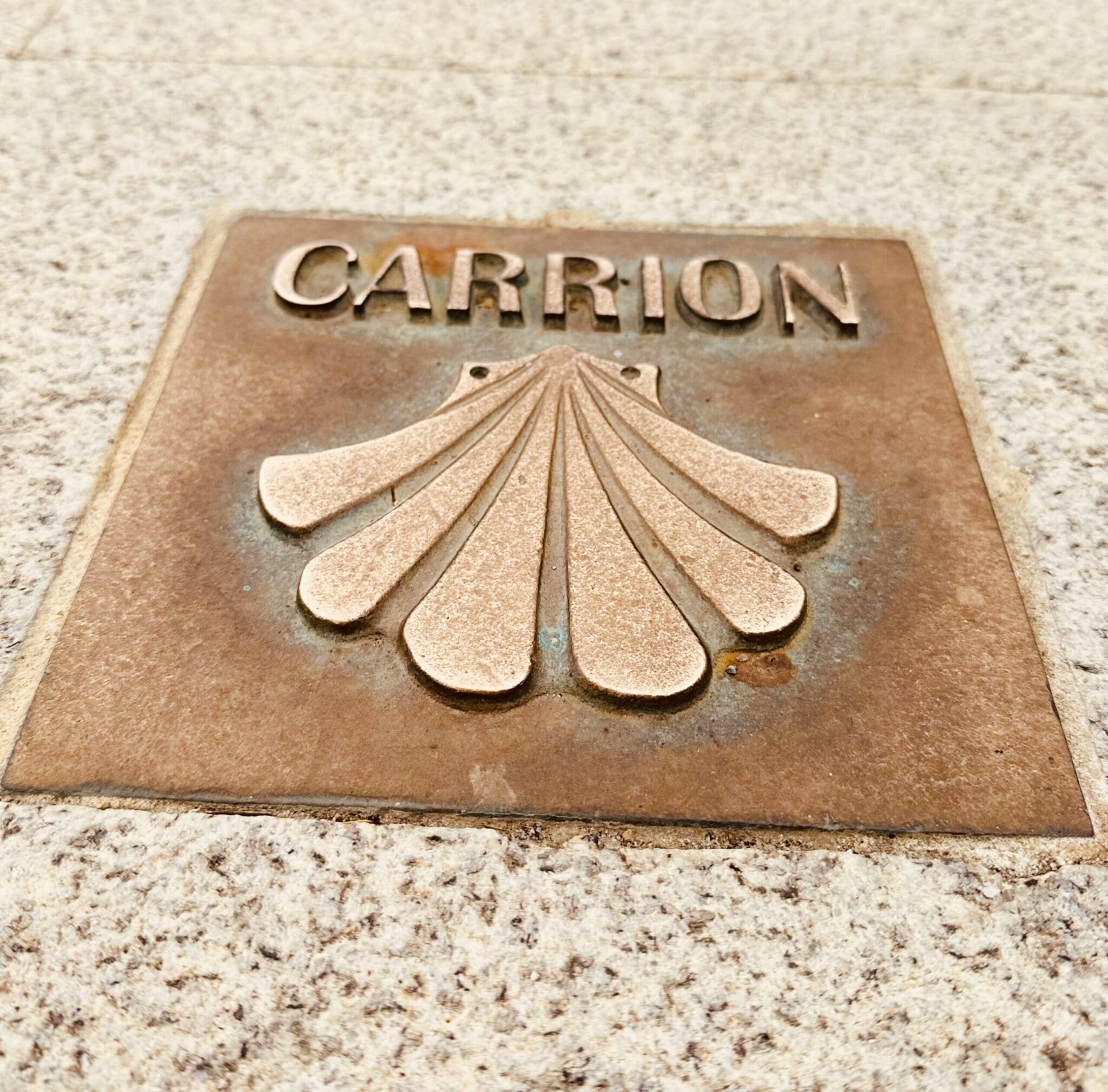
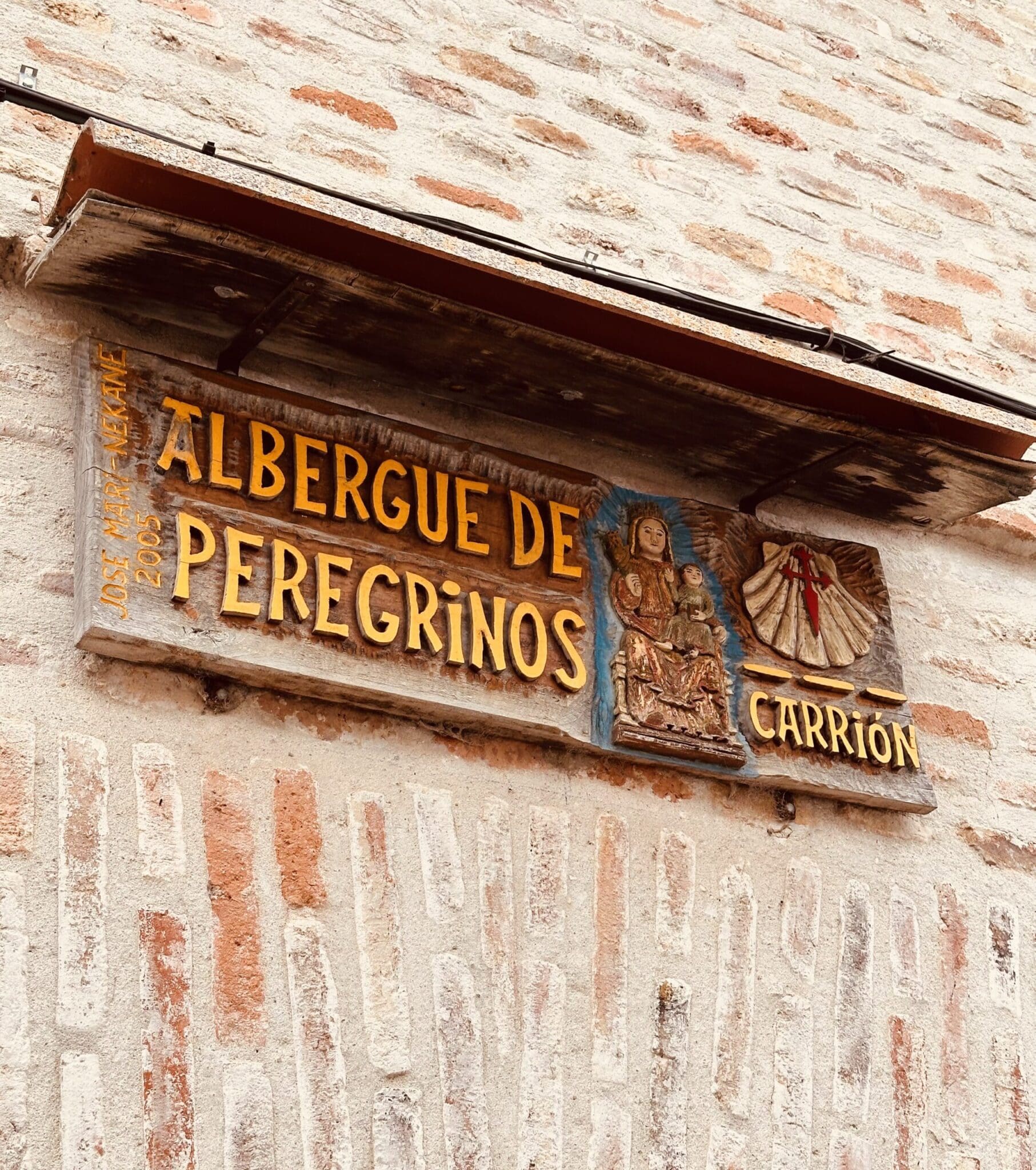
The albergue itself is basic but clean, with shared dorms, a kitchen, and laundry facilities. It’s first-come, first-served—no reservations.
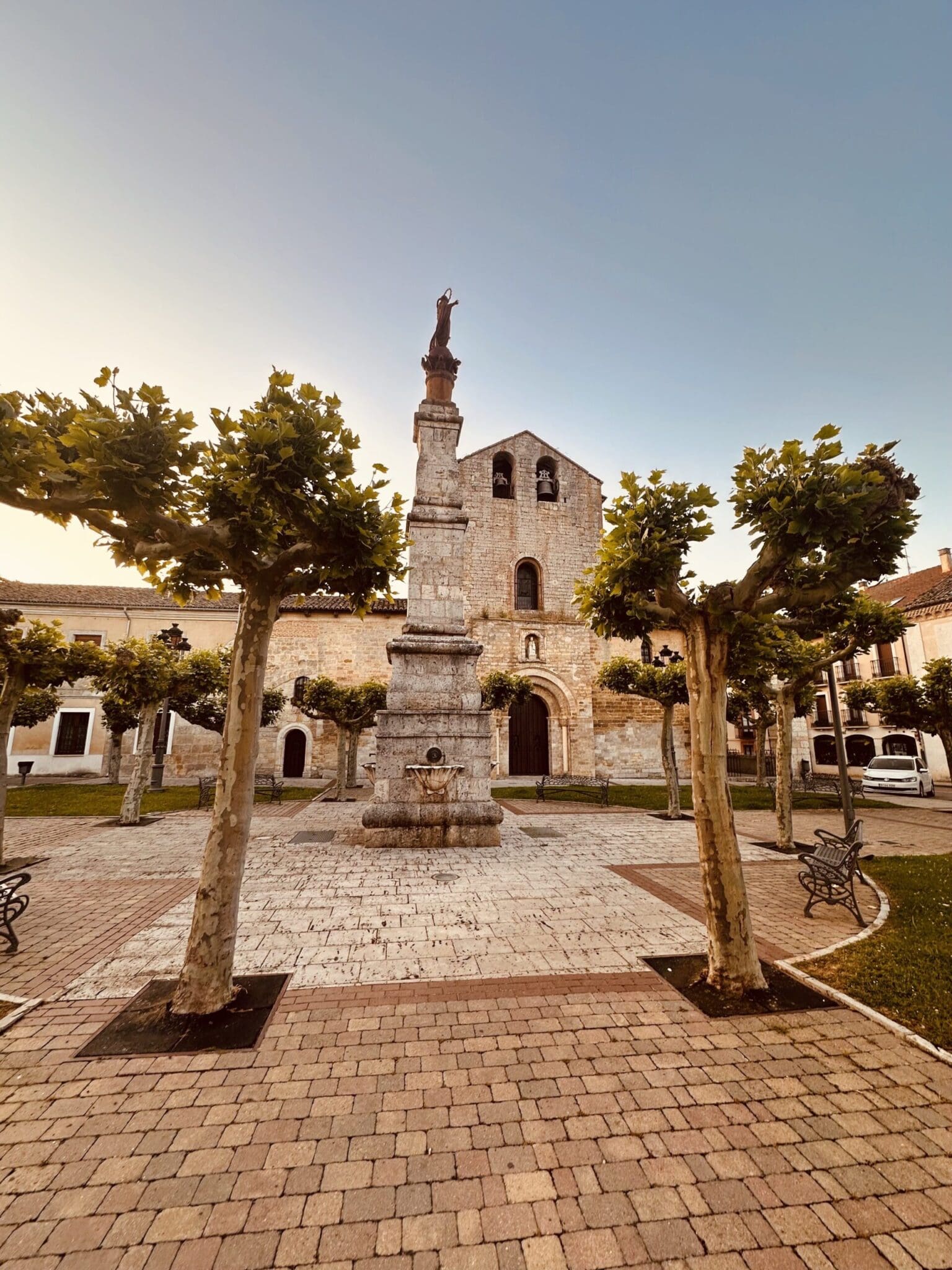

Carrión also has a few shops, cafés, and a pharmacy, good for restocking before the long walk ahead.


